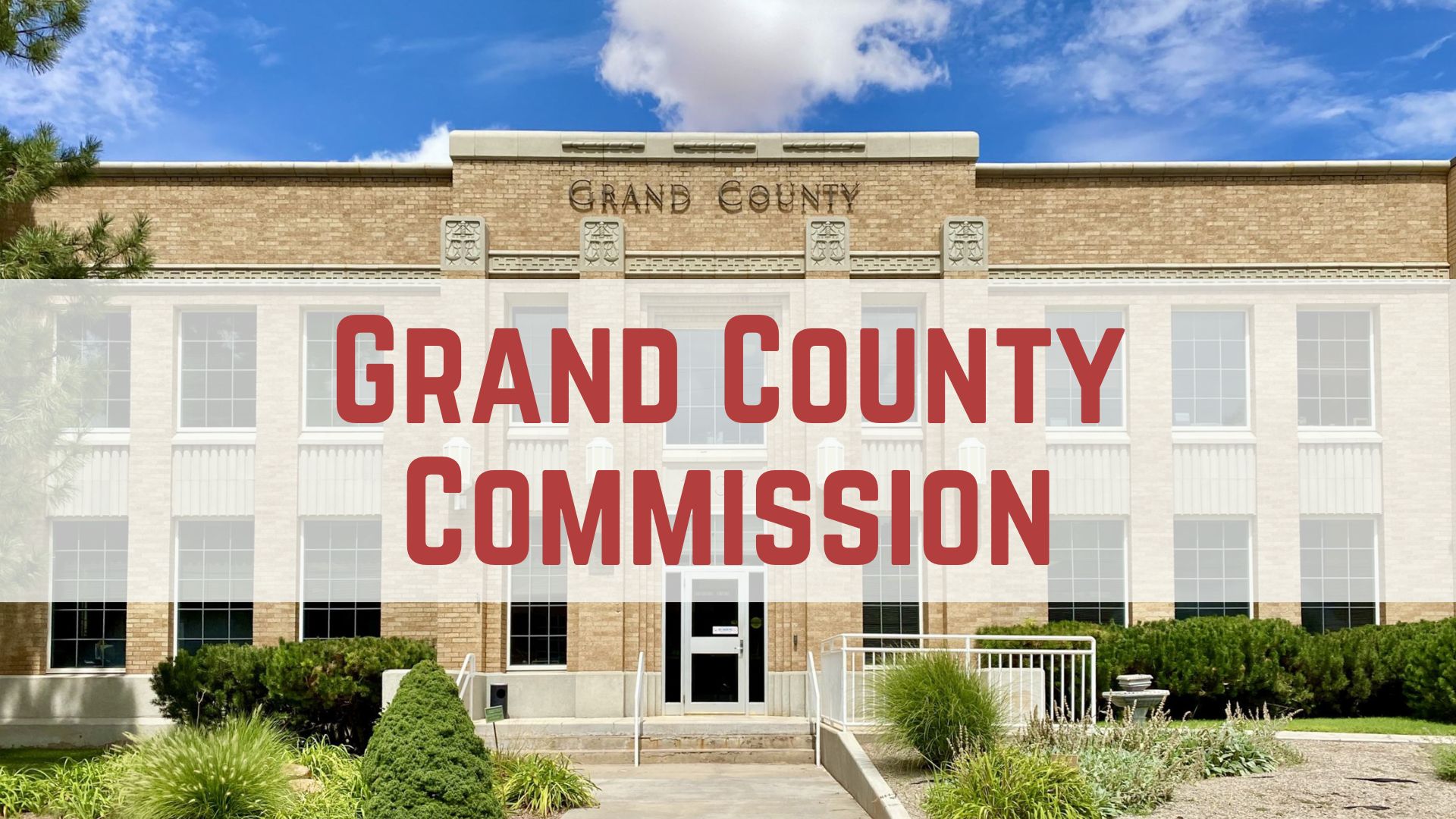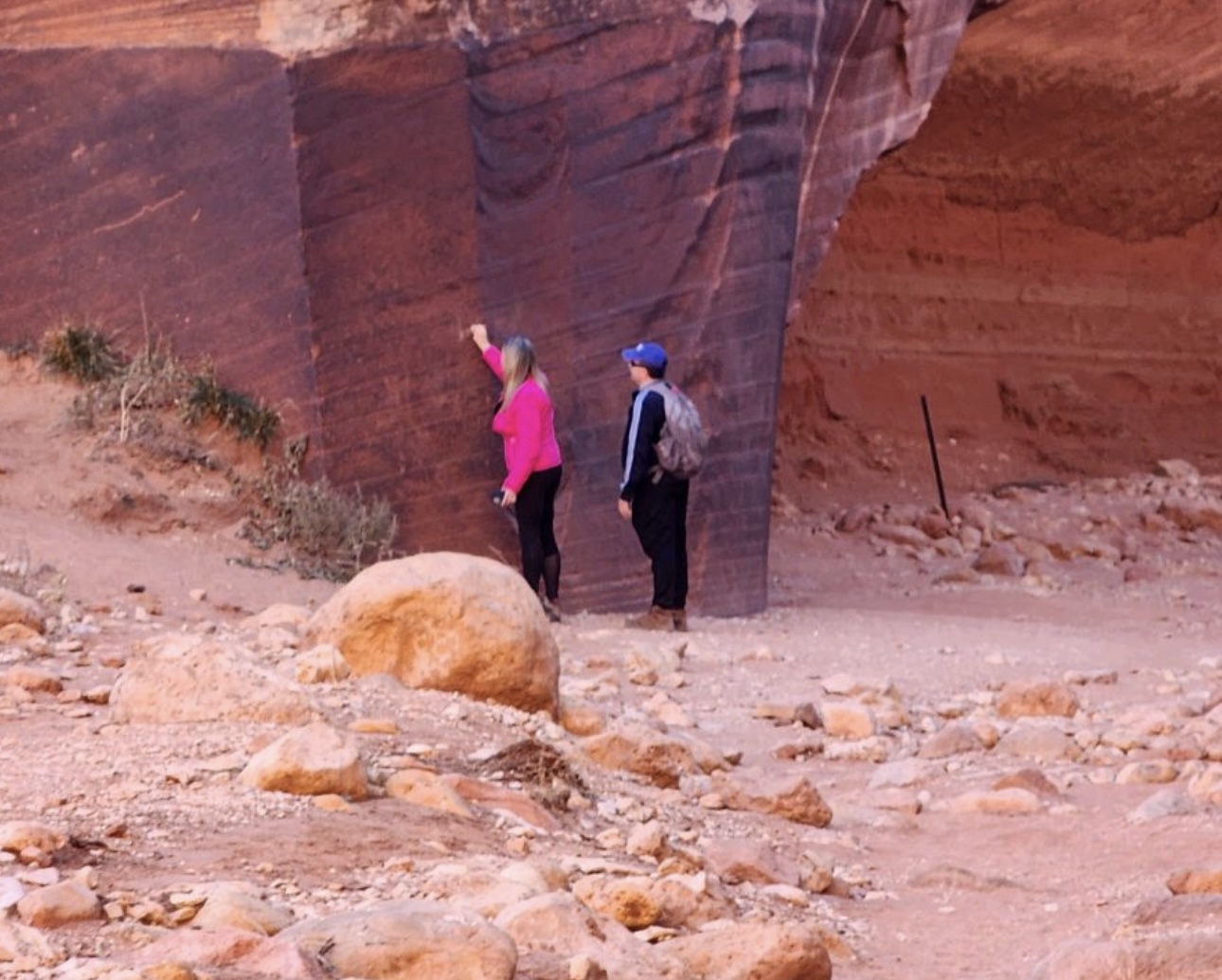Some information may be outdated.
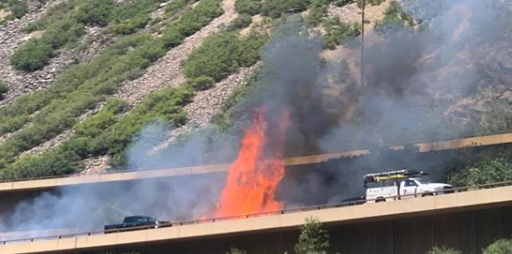
Kyle Jones was there the moment that what he calls “the nightmare” started.
On Aug. 10, Jones was floating down the Colorado River through Glenwood Canyon with a group of friends. The rugged canyon in Western Colorado runs along the river, followed by the busy roadway of Interstate 70.
That’s where the group first saw the smoke coming from between the decks of I-70. Then the flames.
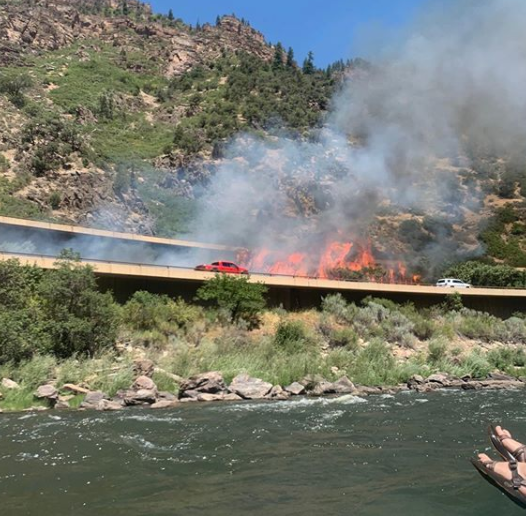
Glenwood Springs resident Kyle Jones caught these photos of the start of the Grizzly Creek Fire in Glenwood Canyon. The wildfire has now consumed over 29,000 acres in western Colorado and led to a historic closure of Interstate 70. [Photos courtesy of Kyle Jones]
“Within twenty minutes, the fire grew so large and went up the entire side of the canyon,” said Jones in a conversation with the Moab Sun News. Jones said that the intense heat of the flames reached the friends in the water.
They immediately knew they were seeing a significant wildfire start, he said.
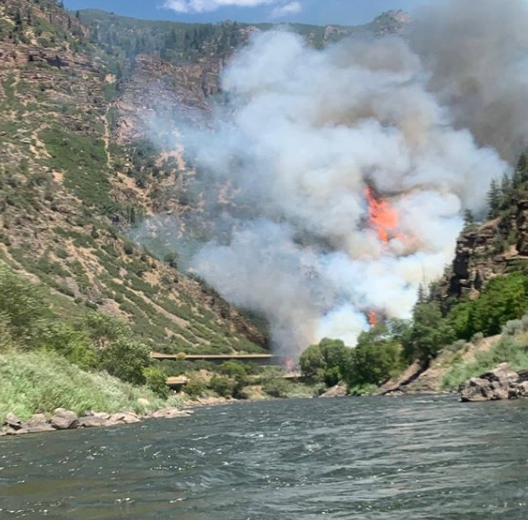
[Photos courtesy of Kyle Jones]
“I’ve seen wildfires before, but I’ve never seen a fire spread at that rate,” said Jones. “But with the way that the wind works through the canyons and the dry summer…We had to sit on that river and watch it burn, feeling the seconds go by with a pit in our stomachs.”
By the time emergency services arrived, he said it was clear the fire was already out of control.
Those flames were the start of the Grizzly Creek Fire, which now has consumed over 29,000 acres in the popular hiking and tourist area and led to a historic shutdown of I-70 between Glenwood Springs and Gypsum, CO.

[Photos courtesy of Kyle Jones]
“It’s a very special canyon, it’s so beautiful,” said Jones. “It felt so personal, it was devastating to watch it be destroyed.”
Pine Gulch Fire now 2nd biggest in Colorado history
Colorado is now suffering four large wildfires, including the Pine Gulch Fire which is raging just above Grand Junction, CO, visible as a nighttime glow on the Moab horizon.
The Pine Gulch Fire, which is believed to have started due to lightning on July 31, exploded in size on Tuesday night after high winds swept through the area. The fire now covers over 125,108 acres, officially the second-largest wildfire in Colorado history and close to the record set by the 2002 Hayman Fire, which burned 137,000 acres.
“Fire behavior specialists report that the combination of extremely dry fuels, low relative humidity, high temperatures, and terrain driven winds may continue to create extreme fire behavior that is resistant to suppression efforts,” a report issued by the Rocky Mountain Incident Management Team cautioned.
Fire authorities estimate the blaze is just 7% contained as of Wednesday morning and nearby communities in Garfield County have been advised to prepare for a potential evacuation.
New fires continue to break out around Utah and Colorado due to hot weather and drought, and Colorado Gov. Jared Polis announced a 30-day statewide fire ban on Aug. 18.
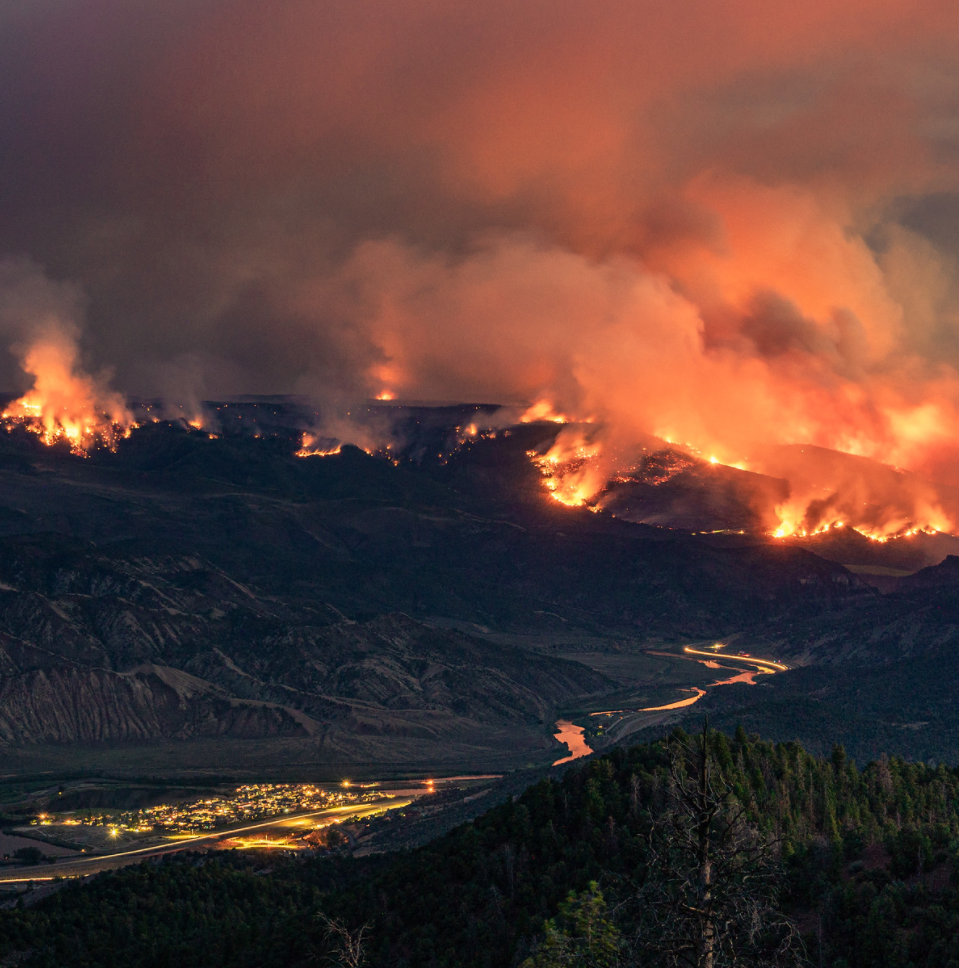
The Grizzly Creek Fire burns above the confluence of the Colorado and Eagle rivers. [Rob Phillips / www.robphillipsphotography.com]
The many fires burning across the country have led to competition for resources, according to fire officials. Over 892 fire personnel are currently fighting the Pine Gulch blaze, while 820 are working on the Grizzly Creek Fire.
Utah Fire Info reports five active wildfires in the state as of Aug. 19, including the 250-acre Cowboy Fire near Salina, which has caused closures in Fish Lake National Forest and the Manti-La Sal National Forest, and the Cougar Fire, which is burning near Cedar City.
Damage to I-70 leads to traffic issues
I-70, the main national route connecting Colorado to Utah, has been closed for over a week with no timeline for reopening the damaged roadway. As the Grizzly Creek fire began burning on the canyon cliffs surrounding I-70, Colorado officials at first appeared optimistic that the interstate would be reopened to traffic quickly but the steep, rugged cliffs and high winds proved resistant to fire authorities’ attempts to contain the blaze.
Documentation released by the Grizzly Creek Fire authorities shows significant damage to the roadway from boulders displaced as the fire burned.
Many smaller rural roads were inundated with traffic attempting to avoid the closure, including semi-trucks. Officials in Pitkin County closed Independence Pass, outside of Aspen, Colo., after multiple semi-trucks attempted to negotiate the road’s hairpin curves. Outcry from officials in neighboring counties who raised concerns about emergency evacuation access for cities threatened by the fires led to a limited reopening of the road to traffic on Aug. 14.
For more information regarding road closures go to www.cotrip.org. Colorado wildfire information can be found at www.colorado.gov/pacific/dfpc/wildfire-information-resource-center. Information for Utah can be found at www.utahfireinfo.gov
Appreciate the coverage? Help keep local news alive.
Chip in to support the Moab Sun News.


